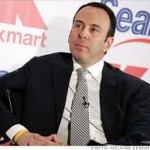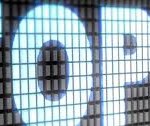Some stories you tell because you are excited and enthused. Other stories you tell with some reluctance because, although the story should be shared, the story leaves a bad taste in your mouth. This story falls in the latter category – the story of an insurance company (formerly a mega, mega insurance power) American International Group (AIG).
In my defense, the majority of the U.S. public agrees with me. The Harris Poll people present an annual “Reputational Quotient Study” of U.S. corporations.[1] For the past three years, AIG has been ranked dead last in public reputation among the top sixty corporations – with a score each year below the “50” level (“Very Poor”) which Harris suggests often casts the future of said company into serious doubt. (As a side note, Goldman Sachs (GS) came in 59th in 2012 and 2013, also with a sub-50 score!).
So the natural question is: “AIG?! Why do I want to know about AIG?!!” Read on and you will find out!
First, the AIG of today is not the evil, greedy, overleveraged giant of pre-Mortgage Crisis days. (A Google search of “A.I.G.” yielded me one entry labelled “Arrogant, Ignoble, Greedy!”). At the time of the crisis, AIG was (by far) the world’s biggest insurance company (balance sheet of $1.06 trillion; 74 million customers spread across 130 countries). However, as the financial system (nearly) collapsed and liquidity became extremely tight, the over-leveraged AIG was incapable of meeting its obligations.
Knowing that a collapse of AIG would result in an unacceptably calamitous failure of insurance policies of all types throughout the country and around the world (a dominoe effect), the U.S. Treasury pumped liquidity into AIG (required at a number of points). AIG still remains as a “bailout poster child” for countless Americans. However, that public perception is utterly remiss to the extent that the U.S. Government has made a $22.7 billion profit from selling the AIG shares it received in return for its bailout money. Given our continuing budget deficits and growing national debt, perhaps the government would do well to engage in new, equally profitable bailouts!
Since 2008, AIG has been thoroughtly revisioned, resized, reorganized, and reformed. Other than its name and ticker symbol, it would scarecely be recognizable to Rip Van Winkle if he had fallen asleep in 2007 and woke up today. To lay out some rough parameters of this transformation, take a look at this snapshot of some crucial AIG data in 2008,versus today’s company:
More specifically, here is a table of the biggest institutional holders. What jumps out at us is the huge commitment that fund manager, Bruce Berkowitz (Fairholme Fund) has made to AIG (over $3 billion):
Now that AIG management has gotten itself beyond the goal of repaying the U.S. Government, it is working with the Federal Reserve and other regulators for approval of a “looking forward” capital plan. In this regard, it is crucial to note the vastly improved financial vibrancy of AIG. Consider these graphs:
1) Trailing Twelve Month (TTM) Diluted Earnings Per Share: Strong uptrend and then stable.
2) TTM Free Cash Flow: continuing uptrend (great sign)
3) Current Ratio (ability to payoff short-term debt with short-term assets… one standard sign of financial strength): what a stark contrast to 2008!!
What is all of this leading to? In earlier months, we have thoroughly documented for you the performance edge accruing to stocks that either increase dividends and/or engage in a share buyback program. Those are two common ways of enhancing “shareholder value”. AIG has announced that both of these “value add” strategies are coming in the months ahead! (The AIG CEO announced this back in March on CNBC).
With $7/share of free cash flow each year, the options are wide open for AIG management! I can assure you that the following scenario will not be chosen (too aggressive), but here is just one down and dirty illustration of what could be done:
If AIG took the $7/share and applied $3.50 toward share buyback and $3.50 toward a dividend, the potential dividend yield would be 7.8%. (I re-emphasize – this will not happen!) This suggests the scale of AIG’s newfound flexibility.
Shareholders have not been blind to these developments. Consider this two-year price chart:
To provide perspective, review this graph of AIG’s value before and after the financial crisis; what an incredible contrast!
Here is a different perspective that compares the price trend of AIG (blue) vis-à-vis the SPDR S&P Insurance ETF (KIE)(red) – it is easy to see AIG’s outperformance.
Finally, here is an image of recent price activity in AIG (from a ThinkorSwim “Daily” Chart). Notice the ample daily volume (liquidity) in the multi-millions, and consider AIG’s current price relative to the top (blue) edge of the Keltner Channel (it is above the channel, so may (or may not) be over extended)).
The grossly oversimplified price range within which AIG has been trading most recently is approximately $43.50 to $47.
INVESTOR TAKEAWAY: From the beginning of this article, I have been transparent regarding my “emotional” reaction to AIG. However, as you have seen, there are a number of positive developments related to AIG. So as I “hold my nose”, I suggest that you process all this information through your standard investment (or trading) plan. IF AIG utilizes a substantial portion of its excess cash to initiate a shareholder-friendly capital plan (some mixture of buybacks and dividends), there should be a significant lift to the stock. This is not a buy recommendation, and I am no trading whiz, but I think we would all agree that as long as AIG’s share price remains over 40% lower than its current book value (about $67), a buyback makes great economic sense!
DISCLOSURE: The author does not own shares of AIG, KIE, or the Fairholme Fund. Nothing written above is intended as a recommendation to buy or sell anything. You should always consult with your investment advisor before initiating any new investment transaction! (As an aside, I have never received a bailout from the U.S. Government, either!)
Related Posts
Also on Market Tamer…
Follow Us on Facebook

 You Don't Need Talent to Succeed: Lessons From Warren Buffett's Lifetime of Investing
You Don't Need Talent to Succeed: Lessons From Warren Buffett's Lifetime of Investing



